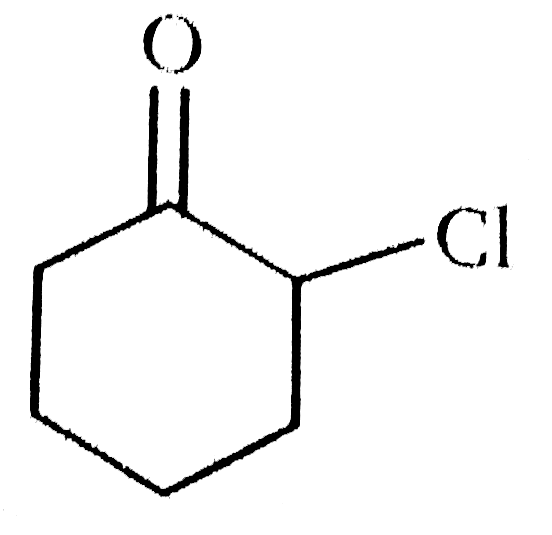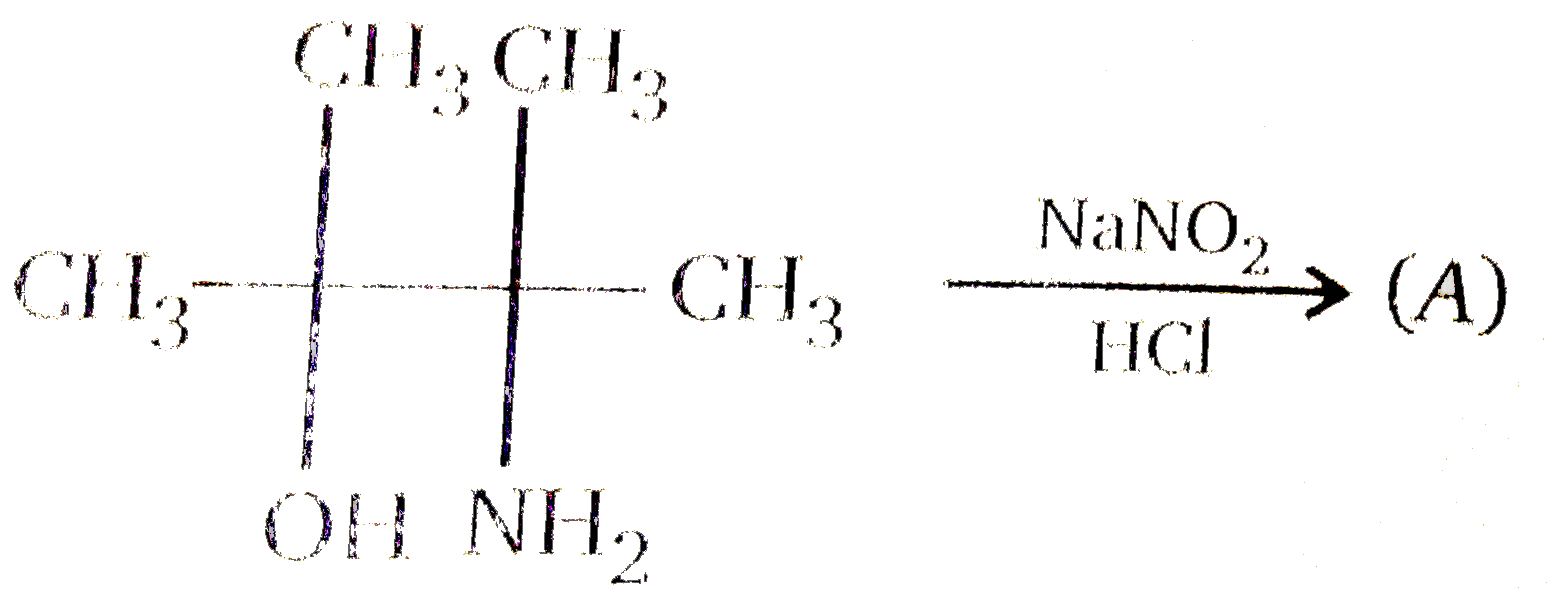Di-tert-glycols rearrange in the presence of acid to give α-trtiary ketones. The trivial name of the simplest glycol of this type is pinacol, and this type of reaction therefore is named pinacol rearrangement (in this specific case, the reaction is called a pinacol-pinacolone rearrangement). The rearrangement involves 4 steps. one of the hydroxyl group is protonated in the first step. A molecule of water is eliminated in the second step and a tertiary carbocation is formed. the carbocation rearranges in the third step into a more stable carboxonium ion via a [1, 2] rearrangement. In the last step, the carboxonium ion is deprotonated and the product ketone is obtained.
![Di-tert-glycols rearrange in the presence of acid to give alpha-trtiary ketones. The trivial name of the simplest glycol of this type is pinacol, and this type of reaction therefore is named pinacol rearrangement (in this specific case, the reaction is called a pinacol-pinacolone rearrangement). The rearrangement involves 4 steps. one of the hydroxyl group is protonated in the first step. A molecule of water is eliminated in the second step and a tertiary carbocation is formed. the carbocation rearranges in the third step into a more stable carboxonium ion via a [1, 2] rearrangement. In the last step, the carboxonium ion is deprotonated and the product ketone is obtained. What is R.D.S. of pinacol-pinacolone rearrangement ?](https://d10lpgp6xz60nq.cloudfront.net/physics_images/MSC_ORG_CHM_C06_E01_183_Q01.png)
What is R.D.S. of pinacol-pinacolone rearrangement ?
A
I step
B
II step
C
III step
D
IV step
Video Solution
Text Solution
The correct Answer is:B
(A) IInd step (R.D.S.)
|
Updated on:21/07/2023
Topper's Solved these Questions
- BOOK - MS CHOUHANCHAPTER - ALCOHOL, ETHERS AND EPOXIDESEXERCISE - Level 1 (Q.1 To Q.30)1videos
ALCOHOL, ETHERS AND EPOXIDES
- BOOK - MS CHOUHANCHAPTER - ALCOHOL, ETHERS AND EPOXIDESEXERCISE - Level 23videos
ALCOHOL, ETHERS AND EPOXIDES
- BOOK - MS CHOUHANCHAPTER - ALCOHOLS AND ETHERSEXERCISE - ADDITIONAL OBJECTIVE QUESTIONS (Matrix Match Type )3videos
ALCOHOLS AND ETHERS
Similar Questions
Knowledge Check
- Question 1 - Select One
Di-tert-glycols rearrange in the presence of acid to give α-trtiary ketones. The trivial name of the simplest glycol of this type is pinacol, and this type of reaction therefore is named pinacol rearrangement (in this specific case, the reaction is called a pinacol-pinacolone rearrangement). The rearrangement involves 4 steps. one of the hydroxyl group is protonated in the first step. A molecule of water is eliminated in the second step and a tertiary carbocation is formed. the carbocation rearranges in the third step into a more stable carboxonium ion via a [1, 2] rearrangement. In the last step, the carboxonium ion is deprotonated and the product ketone is obtained.


Product 'P' is :A B
B C
C D
D
- Question 2 - Select One
Di-tert-glycols rearrange in the presence of acid to give α-trtiary ketones. The trivial name of the simplest glycol of this type is pinacol, and this type of reaction therefore is named pinacol rearrangement (in this specific case, the reaction is called a pinacol-pinacolone rearrangement). The rearrangement involves 4 steps. one of the hydroxyl group is protonated in the first step. A molecule of water is eliminated in the second step and a tertiary carbocation is formed. the carbocation rearranges in the third step into a more stable carboxonium ion via a [1, 2] rearrangement. In the last step, the carboxonium ion is deprotonated and the product ketone is obtained.


Product (A) is :ACH3−O∣∣C−CH3∣C∣CH3−CH3B C
C DNone of these
DNone of these - Question 3 - Select One
Di-tert-glycols rearrange in the presence of acid to give α-trtiary ketones. The trivial name of the simplest glycol of this type is pinacol, and this type of reaction therefore is named pinacol rearrangement (in this specific case, the reaction is called a pinacol-pinacolone rearrangement). The rearrangement involves 4 steps. one of the hydroxyl group is protonated in the first step. A molecule of water is eliminated in the second step and a tertiary carbocation is formed. the carbocation rearranges in the third step into a more stable carboxonium ion via a [1, 2] rearrangement. In the last step, the carboxonium ion is deprotonated and the product ketone is obtained.


How many products obtained in above reaction ?A1B2C3D4


 rearranges to :
rearranges to :